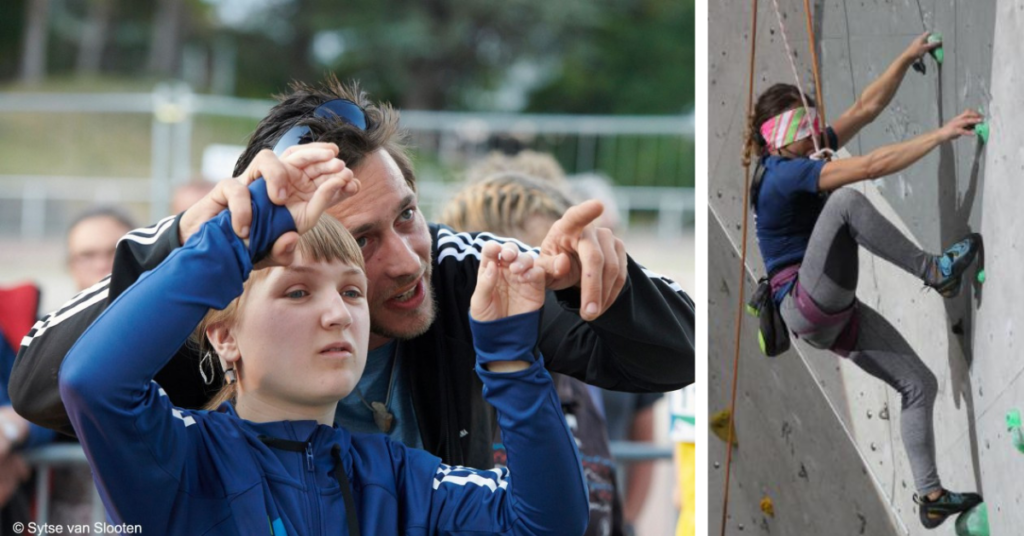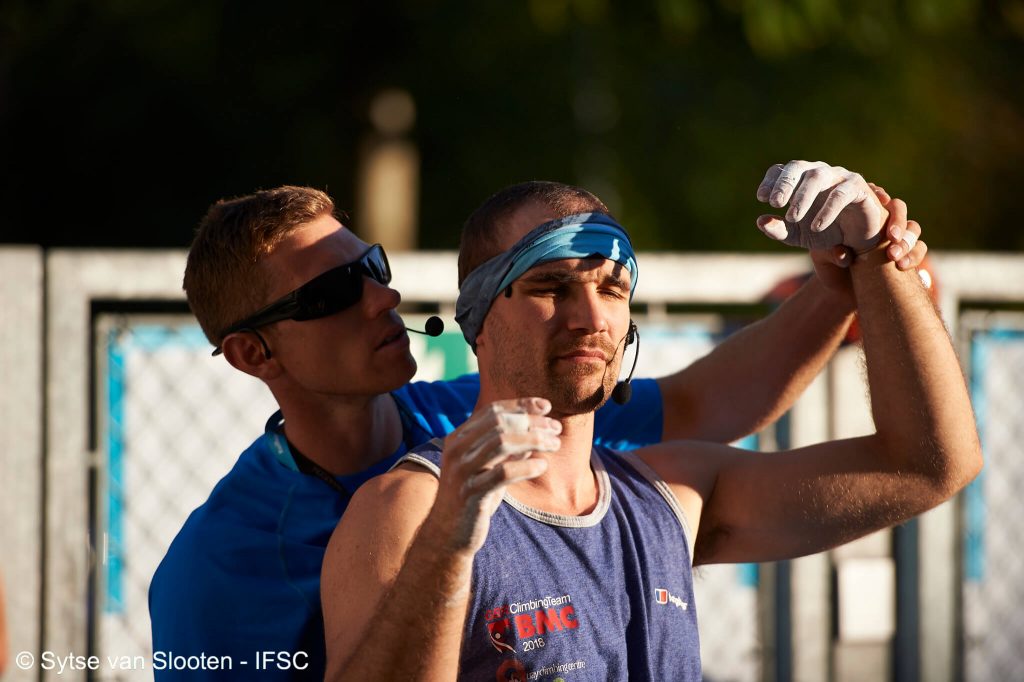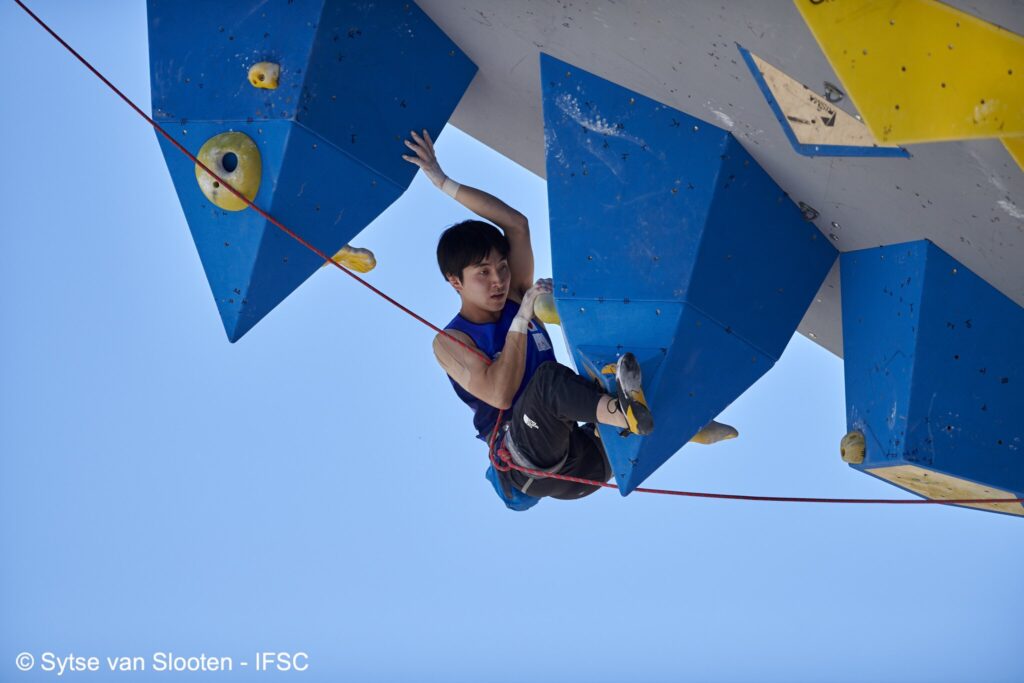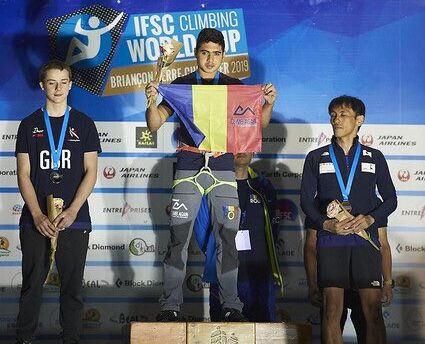Contents
In paraclimbing athletes are put into categories based upon the type and level of their disability. For visually impaired athletes these are the B categories. There are 3 different categories : B1, B2 and B3. In the UK some sports also include B4+5 but these are not generally recognised internationally. Climbers taking part in competitions should have an official sight classification.
The classification an athlete is given is always done using best correction in the better eye.

Categories Explained
B1
This category includes having no light perception in either eye, light perception and ability to perceive some movement in front of the eye but inability to recognise shapes.
B1 athletes compete blindfolded in climbing. Their vision usually ranges from nothing at all to being able to see the difference between light or dark.

B2
Partially sighted B2 athletes will have limited vision in both eyes either in how far or how wide they can see. This category includes being able to count fingers at 15 centimetres to a visual acuity of up to and including 2/60.
2/60 means somebody within this sight category would see the top letter of the vision chart at a distance of up to and including 2 metres. A normally sighted person would see that letter at a distance of 60 metres.
B2 also includes someone with a visual field of under 10 degrees even if their acuity is better than 2/60
B2 climbers don’t have to wear a blindfold during competitions. There can be a big variation in what athletes can see in this category. They could have a wide field of relatively poor vision or a narrow field of reasonably good vision or be somewhere in between. Some athletes may have more useful vision than others.

B3
B3 is the highest category used for most international & Paralympic sport and includes those with a level of vision better than 2/60 and up to and including 6/60.
It also includes those with a visual field of less than 40 degrees who may have acuity better than 6/60.
B3 athletes don’t wear blindfolds in competition.

Obtaining a sight classification
Athletes in the UK looking to get a sight classification can do so with British Blind Sport. The cheapest way to get classification is to join as a member for £20. A benefit of membership is free classifications.
The process usually involves taking a form to an optician or optometrist who will check your level of vision and complete the forms from British Blind Sport. You may have to pay the optician for the eye test.
Further information on classification can be found on the British Blind Sport website.
